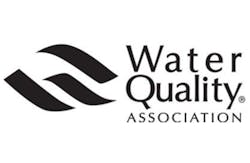Certification Action Line – Questions – March 2013
Answers to these questions appear at www.watertechonline.com/certification-action-line.
Certification Action Line features questions and answers typical of those appearing in Water Quality Association (WQA) certification examinations. Some answers may not satisfy everyone or every condition.
1. The purpose of a backwash cycle following the service cycle of water treatment through a loose media bed is to:
a) expand the bed
b) clean the media particles
c) remove broken media particles and media fines
d) classify the media bed
e) all of the above
2. It is most desirable to have no back pressure on the outlet or discharge line during media backwash.
a) True
b) False
3. Backwash cycles should normally take about:
a) 2 to 5 minutes
b) 10 to 15 minutes
c) 20 to 30 minutes
4. Backwashing of anion resin beds should be done only with softened water.
a) True
b) False
5. In addition to the physical cleaning and reclassification provided by backwashing, media beds that cause water treatment by a chemical reaction can often be regenerated.
a) True
b) False
6. Some water softener regeneration salts contain water hardness minerals.
a) True
b) False
7. The highest concentration of sodium chloride in water that can be obtained at normal temperatures is approximately:
a) 26 milligrams per liter (mg/L)
b) 26,000 (mg/L)
c) 260,000 (mg/L)
d) 2,600,000 (mg/L)
8. Osmosis occurs in ion exchange resin beds during regeneration with a high concentration salt solution.
a) True
b) False
9. Domestic water softeners are often designed to operate in brine concentrations of 80,000 to 120,000 milligrams per liter (8 percent to 12 percent) to accomplish:
a) sufficient volume of regenerant salt solution so as to uniformly contact all of the resin
b) extended resin life
c) reduced osmotic shock
d) b and c
e) all of the above
10. During water softener regenerations, a contact time of the regenerant with the resin should be at least:
a) 30 minutes
b) 3 minutes
c) 60 minutes
